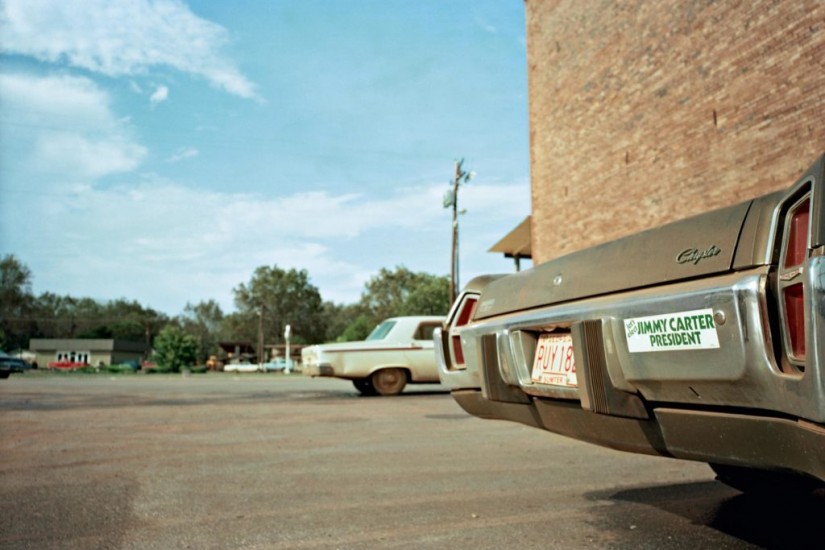On the eve of the 1976 election, William Eggleston traveled to Plains, Georgia, to photograph the hometown of Jimmy Carter. The landscapes he captured were overgrown yet restrained, rusting shacks and crooked tombstones. As he travels along the road from Mississippi to Georgia, the quiet buzz of anticipation grows. In Sumter, a car driving down the highway emerges from behind a small shack with advertisements painted on the side. In front, stalks of ryegrass bend with the wind. Every piece of the landscape, from its residents to the trees, is both fluid and static. The photographs in Election Eve emit an eerie quiet—a town on the precipice of transforming from a provincial backcountry to a presidential hometown.
Just months before, Eggleston had exhibited a controversial series of color photographs at the Museum of Modern Art that documented what one critic called the “perfectly banal” lives of white Southerners. It is likely that after seeing the exhibition at the MoMA, an editor at The New York Times Magazine asked Eggleston to photograph Carter’s hometown of Plains, Georgia. While the piece never materialized, the photographs he took on the trip were eventually collected in Election Eve, Eggleston’s first published work.
The editor who assigned the piece likely hoped that Eggleston’s interest in the growing prominence of white Southerners would result in colorful portraits of the residents of Plains. But, almost pointedly, human subjects rarely make an appearance in Election Eve. Flickers of life materialize in the background—a dog turning its head, skid marks and soda cans left in the dirt. These traces of human presence remind us that Plains is not a ghost town. Its residents linger just out of sight, frozen, as they await the outcome of the election that, regardless of the result, promised to fundamentally alter their identities and redefine what it meant to be a Southerner.
The disquiet in Eggleston’s photographs reflects the stakes of the 1976 election. If Carter won (and he did), he would be the first Democrat to break apart the Republicans’ Southern strategy, as well as the first president from the Deep South since before the Civil War. For Southerners, Carter was the great unifier and his election a sign that the South had truly, finally rejoined the Union. The next morning, Carter would appear in Plains for his victory speech, where he stressed unity and a “common devotion to this country.”
